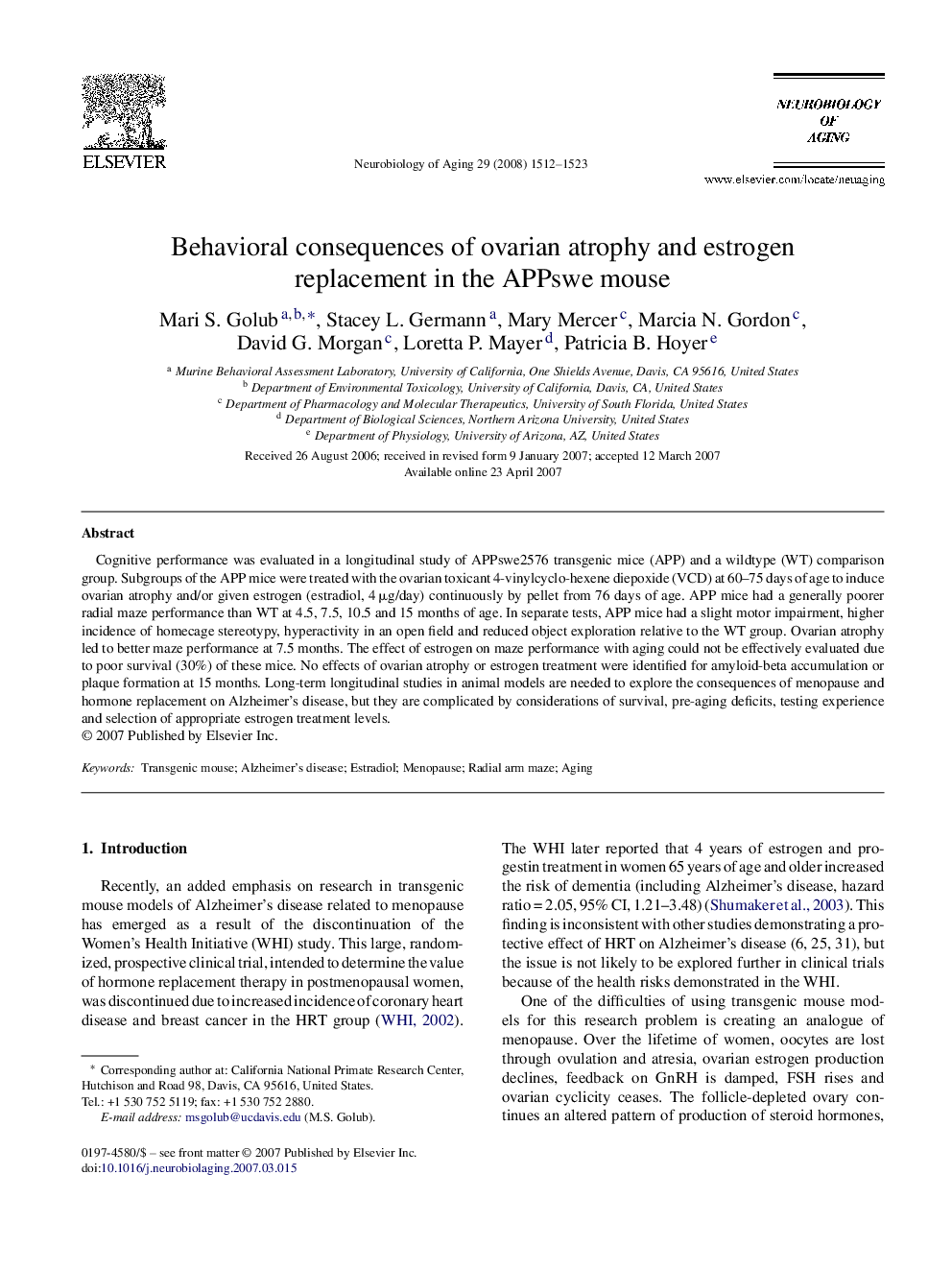| Article ID | Journal | Published Year | Pages | File Type |
|---|---|---|---|---|
| 329505 | Neurobiology of Aging | 2008 | 12 Pages |
Cognitive performance was evaluated in a longitudinal study of APPswe2576 transgenic mice (APP) and a wildtype (WT) comparison group. Subgroups of the APP mice were treated with the ovarian toxicant 4-vinylcyclo-hexene diepoxide (VCD) at 60–75 days of age to induce ovarian atrophy and/or given estrogen (estradiol, 4 μg/day) continuously by pellet from 76 days of age. APP mice had a generally poorer radial maze performance than WT at 4.5, 7.5, 10.5 and 15 months of age. In separate tests, APP mice had a slight motor impairment, higher incidence of homecage stereotypy, hyperactivity in an open field and reduced object exploration relative to the WT group. Ovarian atrophy led to better maze performance at 7.5 months. The effect of estrogen on maze performance with aging could not be effectively evaluated due to poor survival (30%) of these mice. No effects of ovarian atrophy or estrogen treatment were identified for amyloid-beta accumulation or plaque formation at 15 months. Long-term longitudinal studies in animal models are needed to explore the consequences of menopause and hormone replacement on Alzheimer's disease, but they are complicated by considerations of survival, pre-aging deficits, testing experience and selection of appropriate estrogen treatment levels.
